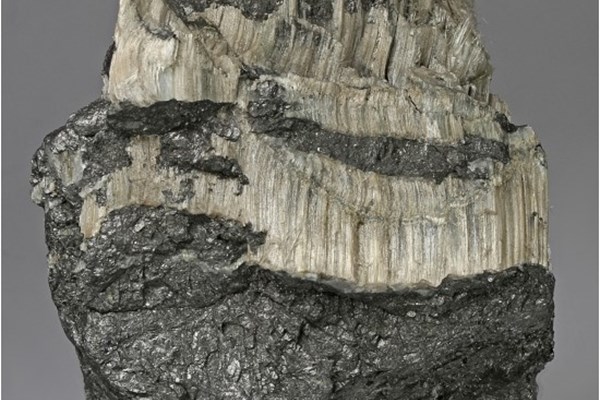Extraction Industries & Manufacturing
A Brief Overview of Asbestos
When it was first produced in the 1870s, asbestos was often called a ‘wonder’ mineral. Its natural fibre and other useful properties meant that it could be used as a strengthener and as a heat resistant substance. Scottish entrepreneurs were amongst the first businessmen to develop asbestos products, with the first commercial use of asbestos occurring in 1874. It was particularly useful in shipbuilding, where its flame-retardant properties could be used in boilers and the engine room. One company was initially known as the Scottish Asbestos Company, and by the mid-1880s it had purchased substantial mines in East Broughton and Black Lake in Quebec, and by 1886 had instigated a number of large-scale improvements to these properties. The material excavated from these mines was processed at Levernshields
Works, Nitshill. That company seems to have branched out into rubber processing and manufacture in the twentieth century. The number of companies involved in the production of asbestos products increased and by 1914, there were more than sixty asbestos manufacturers throughout Scotland, though Glasgow remained the epicentre of the asbestos revolution.

The mineral was used in products such as asbestos panelling, which was soon in huge demand in the shipbuilding industries. Before long, asbestos panels were built into every ship that sailed from the Clydeside ports. But demand did not stop there, and asbestos-cement products were used in the construction industry where the products provided heat insulation, at a low cost. Asbestos was quickly used to insulate boilers, pipes, and storage heaters. The product was also rolled out as a cheap alternative for building homes and schools using asbestos insulated boards for walls and ceilings.
By the 1960s thousands upon thousands of Scotland’s trade workers were using asbestos during the course of their employment, in both the shipbuilding and the construction industries. Many of those workers included laggers, joiners, plumbers, plasterers, electricians, and engineers, most of whom were completely ignorant to the insidious nature of the product they were working with.
Tragically, exposure to asbestos was not confined solely to workers. Washing facilities were seldom available at worksites and asbestos-dust covered workers were therefore obliged to travel home, often on public transport, to their families, thus risking exposure to strangers and loved-ones as the dust loosened and became airborne. The first recorded asbestos related death was that of a female textile worker in an asbestos factory, in 1924. Her name was Nellie Kershaw. Despite this sad death, which coincided with articles published in the British Medical journal detailing fibrosis of the lung due to asbestos inhalation, the development of the asbestos industry was allowed to continue.
Regulations were tightened over the years, but the number of asbestos-related deaths rose and continued to increase. In 1999, seventy-five years after the first recorded asbestos-related death of Nellie Kershaw, the use of asbestos was finally banned in the UK.
